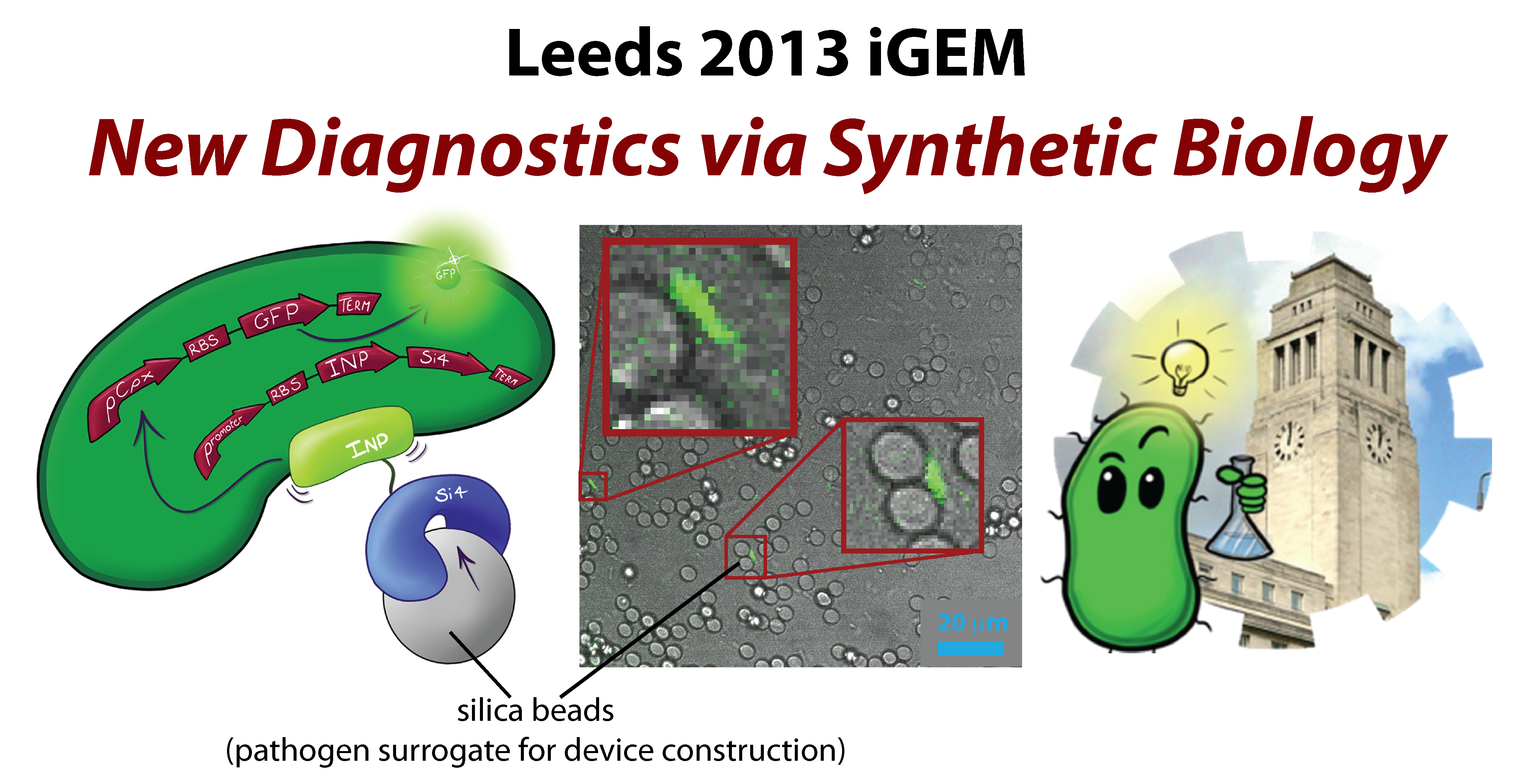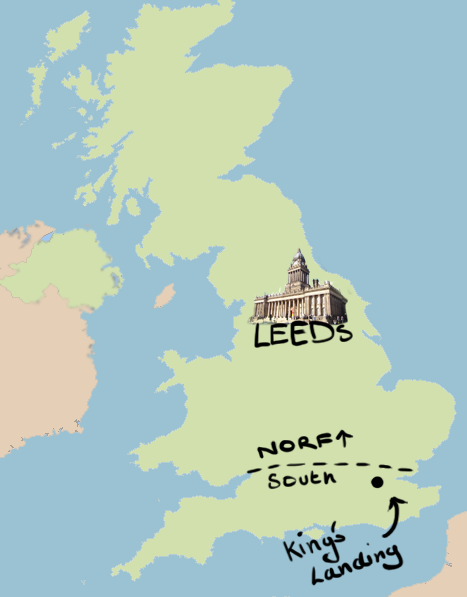Team:Leeds
From 2013.igem.org
| Line 17: | Line 17: | ||
Like the Beagle hunting dog chasing hares, our Micro-beagle is a biosensor designed to hunt down pathogens. Micro-beagle utilises the Cpx pathway and GFP, which, when it fluoresces can be seen with the naked eye. | Like the Beagle hunting dog chasing hares, our Micro-beagle is a biosensor designed to hunt down pathogens. Micro-beagle utilises the Cpx pathway and GFP, which, when it fluoresces can be seen with the naked eye. | ||
<br> | <br> | ||
| + | |||
In order to achieve this we will have designed our biosensor to physically bind to antigens or particles. This binding will induce membrane stress activating the Cpx pathway. By placing the GFP gene downstream of the Cpx promoter, GFP protein will be produced following membrane stress consequently causing the cells tol fluoresce when the pathogen is present in the solution. | In order to achieve this we will have designed our biosensor to physically bind to antigens or particles. This binding will induce membrane stress activating the Cpx pathway. By placing the GFP gene downstream of the Cpx promoter, GFP protein will be produced following membrane stress consequently causing the cells tol fluoresce when the pathogen is present in the solution. | ||
<br> | <br> | ||
| + | |||
As a proof of concept, we will be using silica beads as target analogue for pathogens. In order to bind to the beads will be expressing a silica binding peptide on the surface of the cells using Ice Nucleation Protein (INP). INP allows expression of any gene placed at its C terminus on the cell surface. The theory is that the silica binding peptide sequence can be easily swapped for a sequence of any antigen binding moiety and therefore enable us to detect any pathogen simply, quickly and cheaply. | As a proof of concept, we will be using silica beads as target analogue for pathogens. In order to bind to the beads will be expressing a silica binding peptide on the surface of the cells using Ice Nucleation Protein (INP). INP allows expression of any gene placed at its C terminus on the cell surface. The theory is that the silica binding peptide sequence can be easily swapped for a sequence of any antigen binding moiety and therefore enable us to detect any pathogen simply, quickly and cheaply. | ||
<br> | <br> | ||
| + | |||
Upon completion of our project our suggested initial use for the Micro-Beagle will be a low cost easy to use test used to assess the efficacy of water treatment systems. However as stated earlier the detection system can easily be modified to allow any other large particles whose identification could be of value | Upon completion of our project our suggested initial use for the Micro-Beagle will be a low cost easy to use test used to assess the efficacy of water treatment systems. However as stated earlier the detection system can easily be modified to allow any other large particles whose identification could be of value | ||
<br> | <br> | ||
}} | }} | ||
Revision as of 10:50, 9 August 2013

Who the heck are Leeds?We are the Leeds 2013 iGEM team, We are a group of undergrads from various courses all with a passion for synthetic biology!
So what's the Big Idea?Like the Beagle hunting dog chasing hares, our Micro-beagle is a biosensor designed to hunt down pathogens. Micro-beagle utilises the Cpx pathway and GFP, which, when it fluoresces can be seen with the naked eye.
In order to achieve this we will have designed our biosensor to physically bind to antigens or particles. This binding will induce membrane stress activating the Cpx pathway. By placing the GFP gene downstream of the Cpx promoter, GFP protein will be produced following membrane stress consequently causing the cells tol fluoresce when the pathogen is present in the solution.
As a proof of concept, we will be using silica beads as target analogue for pathogens. In order to bind to the beads will be expressing a silica binding peptide on the surface of the cells using Ice Nucleation Protein (INP). INP allows expression of any gene placed at its C terminus on the cell surface. The theory is that the silica binding peptide sequence can be easily swapped for a sequence of any antigen binding moiety and therefore enable us to detect any pathogen simply, quickly and cheaply.
Upon completion of our project our suggested initial use for the Micro-Beagle will be a low cost easy to use test used to assess the efficacy of water treatment systems. However as stated earlier the detection system can easily be modified to allow any other large particles whose identification could be of value
| |||||||
 |
| ||||||

| |||||||

| |||||||
 "
"







